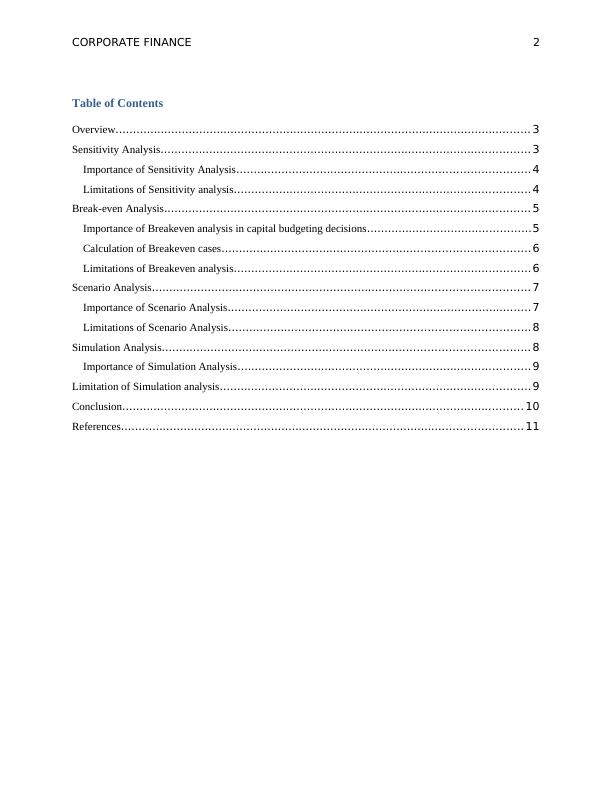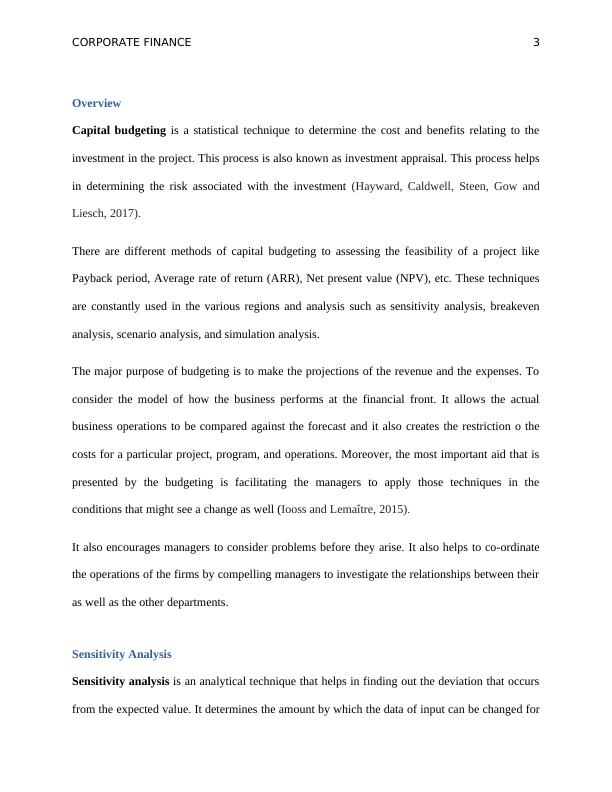Capital Budgeting Techniques: Sensitivity, Breakeven, Scenario and Simulation Analysis
Explain how management of a company can use sensitivity, scenario, break-even, and simulation analysis in their decision-making process, specifically in relation to capital budgeting techniques such as internal rate of return and net present value.
12 Pages2447 Words107 Views
Added on 2022-11-17
About This Document
This article discusses the different capital budgeting techniques like sensitivity analysis, breakeven analysis, scenario analysis, and simulation analysis. It explains their importance, limitations, and applications in making capital budgeting decisions. The article also provides a brief overview of capital budgeting and its purpose.
Capital Budgeting Techniques: Sensitivity, Breakeven, Scenario and Simulation Analysis
Explain how management of a company can use sensitivity, scenario, break-even, and simulation analysis in their decision-making process, specifically in relation to capital budgeting techniques such as internal rate of return and net present value.
Added on 2022-11-17
ShareRelated Documents
End of preview
Want to access all the pages? Upload your documents or become a member.
Risk Analysis in Capital Budgeting Techniques
|14
|3345
|412
RISK MANAGEMENT ANALYSIS FOR PECULAR BUDGETING
|14
|2747
|264
FIN200 Assignment Document
|9
|2574
|29
Capital Budgeting Techniques: Sensitivity, Scenario, Break-even and Simulation Analysis
|8
|2500
|328
Capital Budgeting and Investment appraisal Technique in an Organization
|13
|2916
|456
Capital Budgeting Techniques Assignment
|14
|2489
|224




